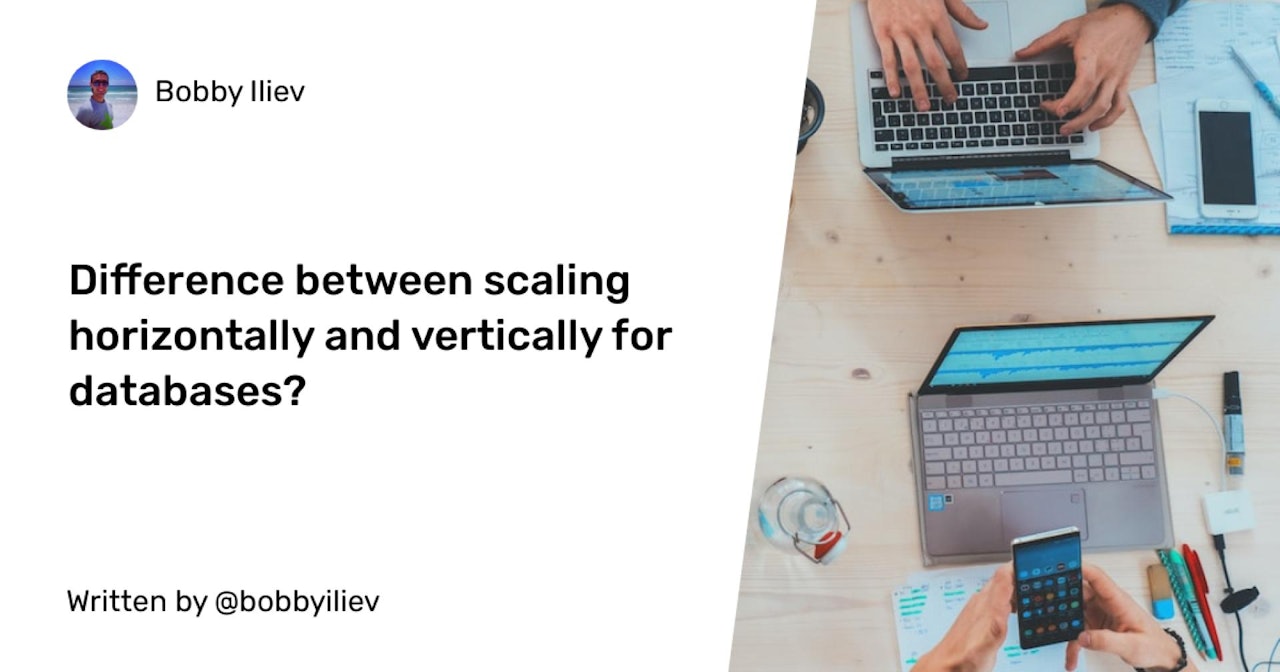Introduction
When your application or website starts to receive more traffic, you'll need to think about how to scale your database to handle the additional load. There are two main ways to scale a database: vertically and horizontally. Let's dive in and understand the differences between these two approaches.

1. Vertical Scaling (Scale-up)**
Vertical scaling, also known as scaling up, involves adding more resources to your existing server to enhance its computational power. This could mean increasing the CPU power, RAM, SSD, or other hardware resources on your existing machine.
Advantages of Vertical Scaling:
- Simplicity: Vertical scaling is usually simpler as it involves just increasing the server's power. There's no need for code changes or complex architecture designs.
- Data Consistency: Since there's only one database, there's no issue of data consistency.
Disadvantages of Vertical Scaling:
- Limited Growth: There's a limit to how much you can scale up a single server. At some point, you won't be able to add any more resources.
- Downtime: To upgrade the server, you might need to face some downtime unless your system supports hot-swappable components.
- Cost: High-end servers can become very expensive.
2. Horizontal Scaling (Scale-out)
Horizontal scaling, also known as scaling out, involves adding more servers to your existing pool of servers. The load is distributed across multiple servers, thereby increasing the ability to handle more requests.
Advantages of Horizontal Scaling:
- Greater Capacity: Horizontal scaling allows for virtually limitless scaling, as you can always add more servers to handle more traffic.
- Redundancy: Having multiple servers can increase the availability of your application. If one server fails, the others can take over.
- Cost-effective: Rather than investing in a high-end server, you can distribute the load across multiple cost-effective servers.
Disadvantages of Horizontal Scaling:
- Complexity: Horizontal scaling introduces complexity into your system. Your application code needs to handle distributing data across multiple servers, and this could require significant re-architecting of your application.
- Data Consistency: When data is distributed across multiple servers, it's harder to maintain consistency. This is especially important for databases, where you want to ensure that all users are seeing the same data.
Scaling Databases
When it comes to databases, both scaling methods have their place.
 View Website
View Website
 View Website
View Website
 View Website
View Website
-
Vertical scaling can be a good option for databases with high data integrity requirements, such as financial systems. However, at a certain point, the cost and limitations of hardware may necessitate a move to horizontal scaling.
-
Horizontal scaling is great for databases with large amounts of data that can be easily partitioned. For example, a database for a social media site could partition data based on user ID, with different users' data stored on different servers.
Conclusion
In conclusion, the choice between vertical and horizontal scaling depends on the specific needs of your database and application. You may also use a combination of both methods for different parts of your application, using a technique known as hybrid scaling.
For more information on database scaling, I would recommend checking out this post here:
If you are already working as a DevOps engineer, check out this DevOps Scorecard and evaluate your DevOps skills across 8 key areas and discover your strengths and growth opportunities


Comments (0)